The Internet of Everyday Things will bring a trillion new wireless, embedded, and networked systems online within a decade or two. Our work explores how these systems should be built to survive and thrive in this not-too-distant future, and how they can be prototyped today to enable breakthrough applications.
Permamote. Exploring reliable, low-power motes.
Permamote combines energy-harvesting, a backing primary store battery, and the newest, lowest power components to achieve consistent operation over a greater than 10 year lifetime with common sensor mote workloads. Currently it performs ambient environmental sensing and reports data over BLE and 802.15.4, however we hope the energy storage and harvesting system can be reused and serve as a base for all future indoor sensor deployments.
View project page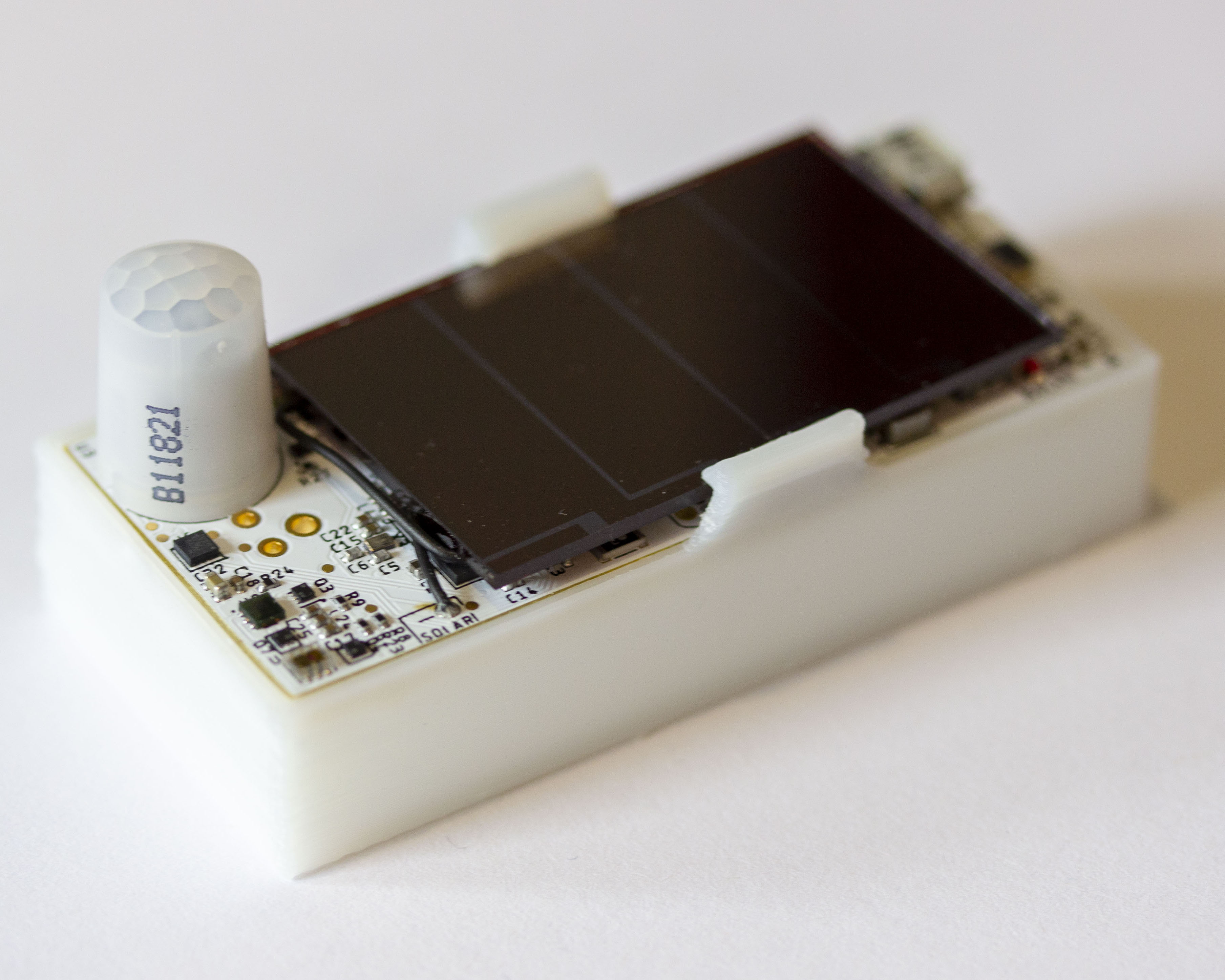

Signpost. Deployable, Modular, City-Scale Sensing
The Signpost platform enables easily-deployable city-scale sensing. Signposts can be mounted to any sign post, harvest solar energy, and provide the key services for their pluggable sensor modules to perform sensing tasks. To enable multiple non-aligned sensor modules to operate within the resource constraints of the system, Signposts meter resource utilization and isolate sensor modules that use over their fair share. We have created sensor modules for audio volume, rf spectrum, radar-based motion, and ambient environmental sensing. The platform is currently being deploying on UC Berkeley's campus, and we hope to use it as a platform to test distributed, resource constrained, software and hardware systems.
View project pageSlocalization. Low-power RF backscatter localization.
Slocalization is a system for indoor localization using UWB, backscatter, RF time-of-flight ranging. The system allows ultra low-power backscatter tags to be localized slowly (minutes-hours depending on distance) at decimeter accuracy. While the UWB backscatter signal would usually be well below the noise floor, the signal is integrated over time to enable its recovery.
View project page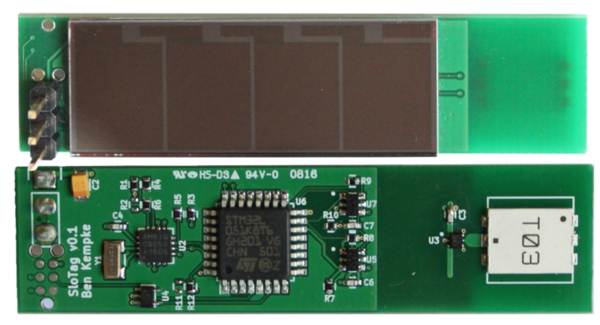
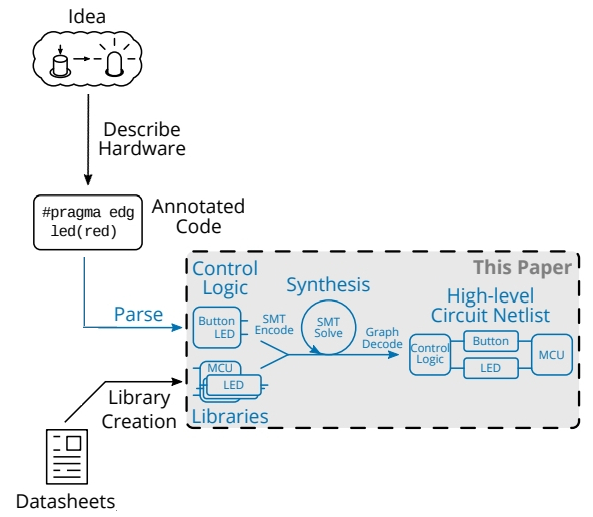
EDG. Generate hardware designs from (annotated) software.
Embedded Device Generation(EDG) can generate complete hardware designs from high-level specifications (like annotated software). This level of abstraction can enable a new generation of coders to take advantage of the increasingly accessible and popular fabrication techniques without requiring them to learn the skills associated with traditional hardware design. The system starts from the user-specified requirements and a library of available components and produces a block diagram containing sufficient information to generate the finalized device firmware, bill of materials, and circuit netlist.
View project pagePowerBlade. Low Profile True Power Meter.
Although the information provided by large-scale plug load power metering can be used to reduce individual power consumption, current implementations of these plug load devices are often too large to be realistic for extremely dense deployments. In this work, we attempt to push the limits of ultra-miniature true power meters, and wireless sensors in general, so as to make them applicable on a broader scale.
PowerBlade is a single PCB that sandwiches in between the plug and the wall outlet. There are slots on the PCB face through which the AC prongs slide before plugging into the outlet, and flexible tabs in the slots make contact with the prongs. This allows PowerBlade to both acquire some power and monitor the power supplied to the AC load.
An overview of the system purpose and design can be viewed here.
View project page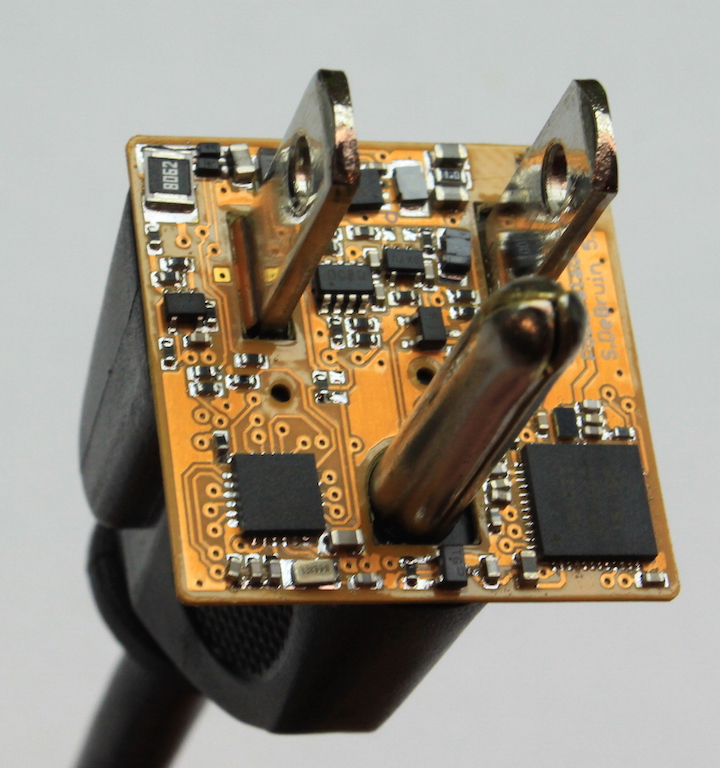
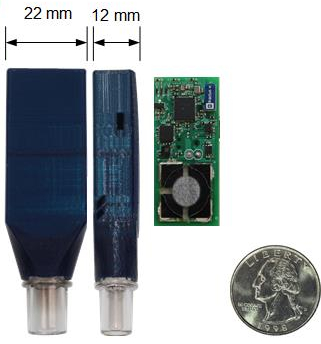
Monoxalyze Verifiable smoking cessation.
Monoxalyze is a carbon monoxide breathalyzer that works with a user's smartphone to verify smoking cessation. Monoxalyze verifies cessation by creating transitive trust between the user, the smartphone, and the Monoxalyze device; the links in this chain are created through facial recognition, visible light authentication, and exhalation verification respectively. These links of trust ensure that the correct user is exhaling sufficiently through the expected Monoxalyze device.
View project pageSummon. Casually browsing the web of things.
Summon enables users to find and directly interact with IoT devices from their smartphone. Devices can beacon out pointers to web resources over Bluetooth, mDNS, or uPnP, and summon well fetch the websites and provide APIs through which the websites can interact directly with the device. This removes the need to download a new app for every smart devices and instead extends the notion of web browsing into our physical spaces.
View project page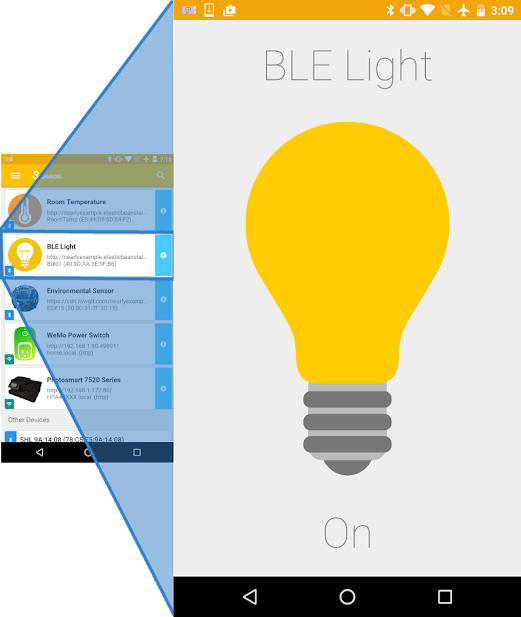
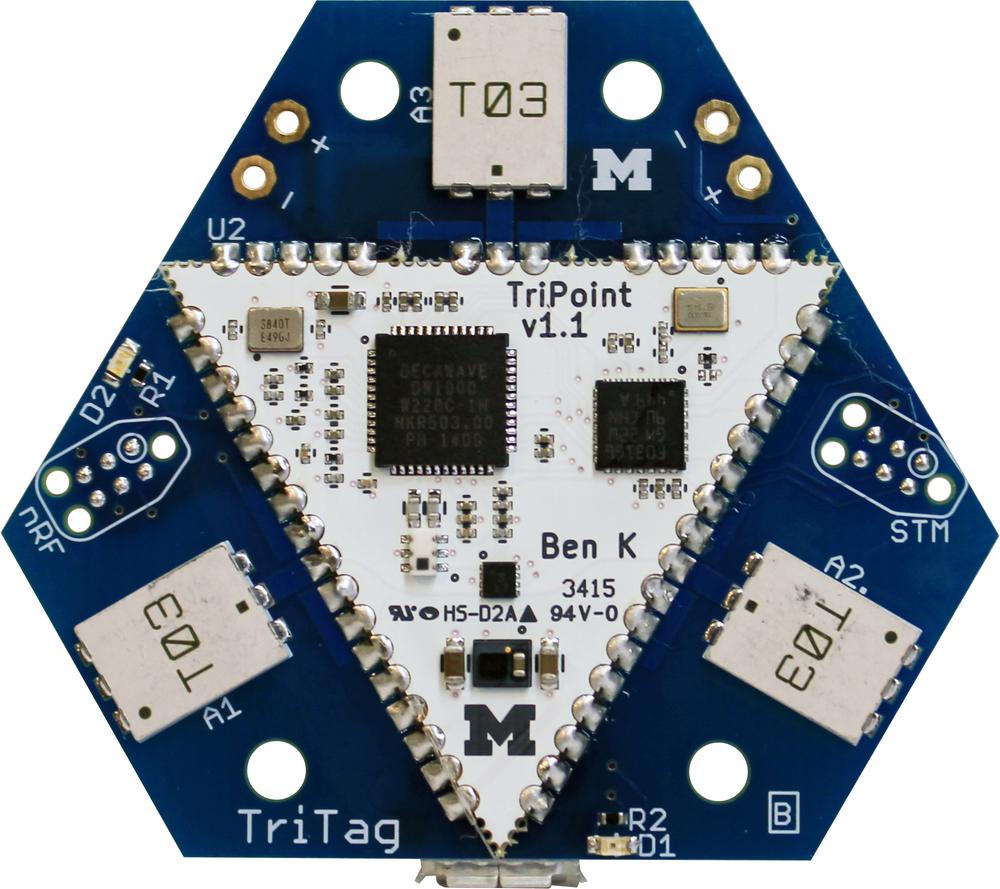
PolyPoint. Accurate RF indoor localization.
PolyPoint is a system for indoor localization using UWB RF time-of-flight ranging. The system uses the DecaWave DW1000 as the UWB radio which provides accurate timestamping of packet transmission and reception times. The key to its accuracy is its ranging diversity: it uses three antennas on the tag, three antennas on the anchor, and three UWB antennas to obtain 27 measurements for each ranging event.
View project pageHarmonia. Cheap, accurate indoor localization with RF.
Ultra-wideband has been shown to achieve order-cm RF-localization accuracy, yet it is prohibitively expensive to implement in practice.
Harmonia seeks the best of both worlds, leveraging affordable, low-energy narrowband frontends with a novel mixing scheme to generate ultra-wideband (UWB) signals. These signals are captured using a tunable narrowband receiver that sweeps the spectrum, stitching together a complete UWB picture.
Harmonia is designed as an assymetric tag and anchor system. Lightweight, low-cost, low-energy, low-complexity tags are distributed in free space. These tags mix the output of a narrowband radio with a square wave to generate a UWB signal. Anchor nodes with a highly tunable narrowband frontend quickly sweep the spectrum and stitch together samples to form one, unified UWB capture.
Our Harmonia prototype captures 56 location samples/second, enabling location tracking with both high temporal fidelity and high resolution in 3D space.
View project page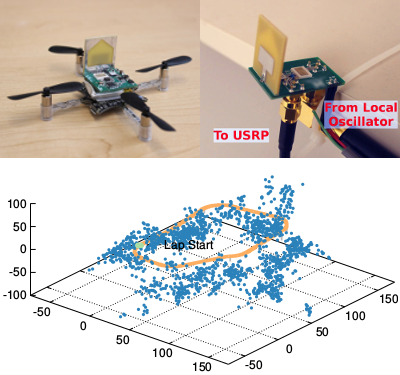
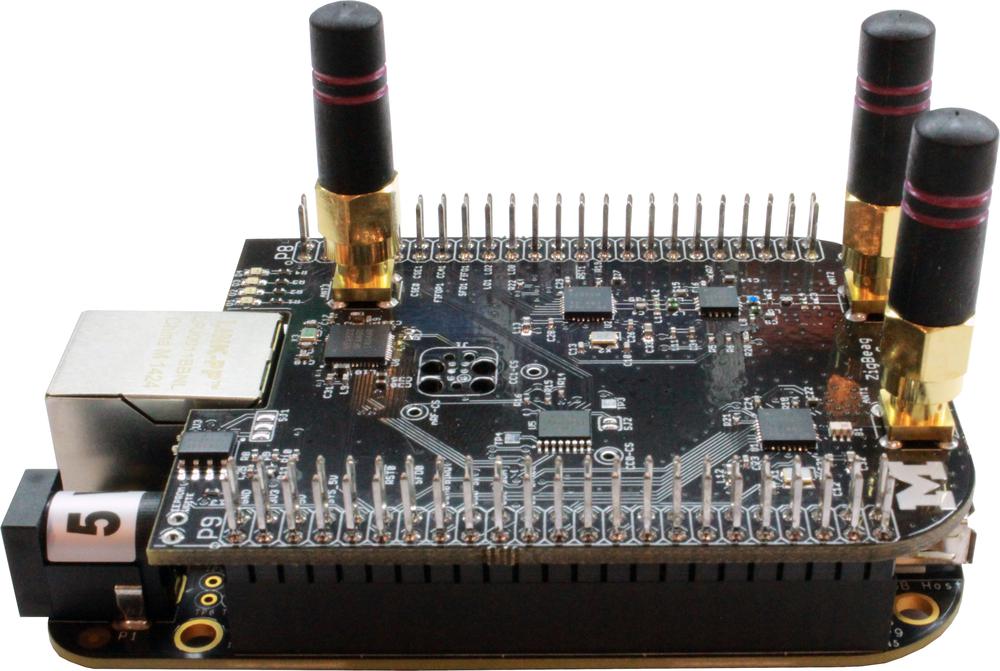
GAP. A 802.15.4/BLE cape for the Beaglebone Black.
Low-power sensor networks operating on 802.15.4 and BLE require a reliable and flexible border router. The GAP cape aims to allow the Beaglebone Black to replace the Raspberry Pi as the most suitable embedded linux platform for 802.15.4/BLE routing.
The Beaglebone Black's internal eMMC storage is more reliable than the often-corrupted SD cards used with the Raspberry Pi. As of revision A, the GAP features two CC2520 radios, one of which is amplified with a CC2591 range-extender. A kernel driver is in development to control both radios. Revision B will improve upon the design and include a BLE radio.
View project pageVLC Localization. Positioning with LED lights and smartphones.
Consumer GPS changed the world. Knowing one's location and the ability to locate objects enabled whole fields of technologies. Yet there is no effective system for accurate indoor localization.
Most state-of-the-art indoor localization systems provide semantic localization, answering "Where Am I?" by telling the user what room or area of a room they are in. We aim to provide true localization, in practice this amounts to order 1 decimeter accuracy in 3D-space.
To achieve this, we exploit the rolling shutter of the CMOS imager in modern smartphones. By modulating (blinking) LED lights at high frequency (1-7 kHz) each light appears solidly on to any people in the room while communicating data to any smartphone in the room.
View project page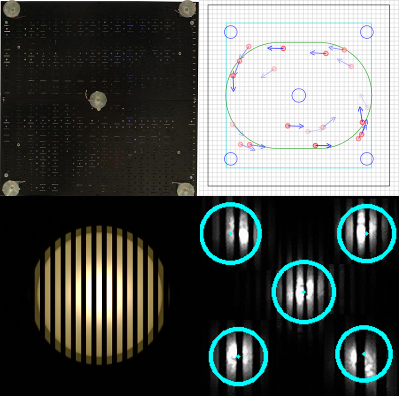
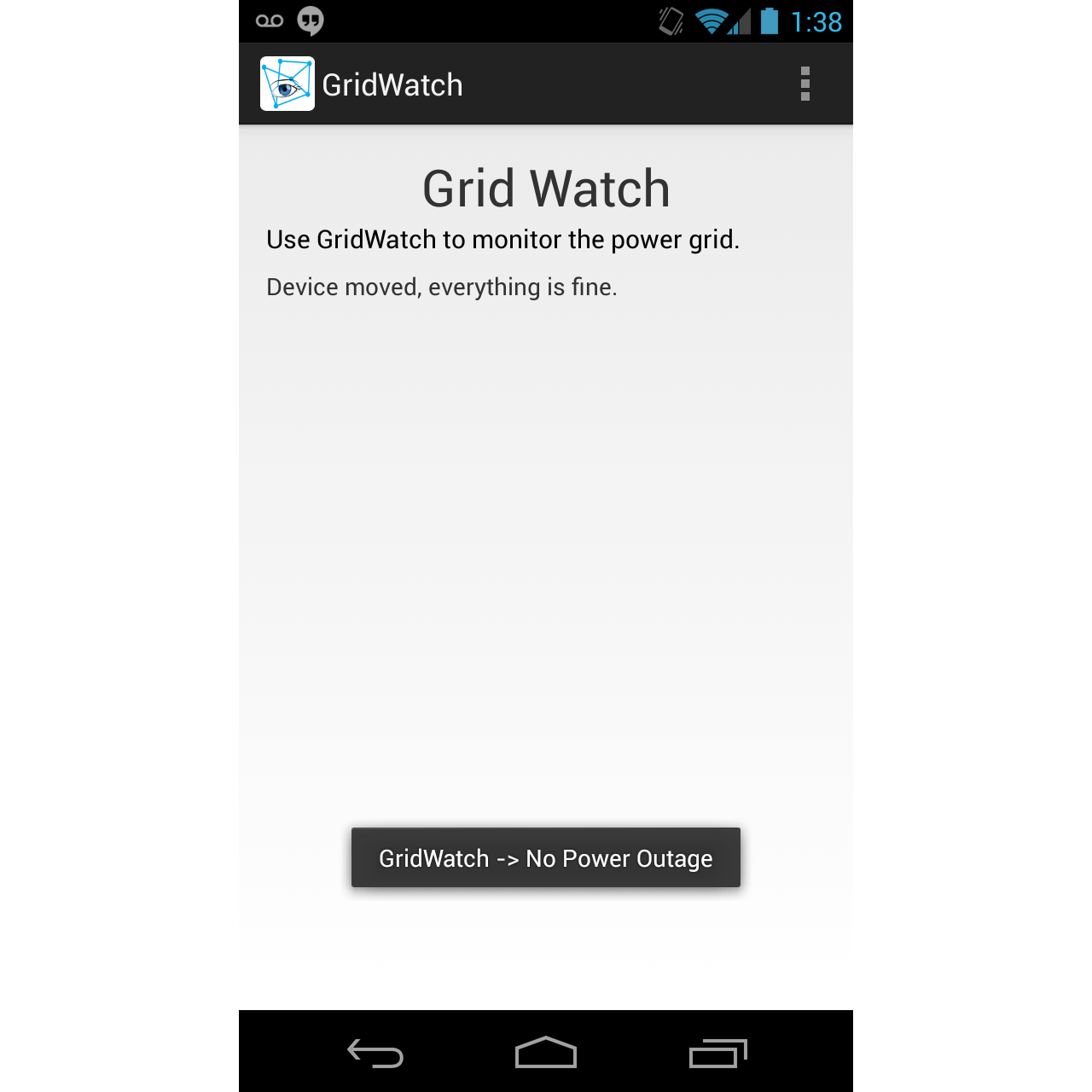
GridWatch. Monitor the grid.
The power grid is one of humanity's most significant engineering undertakings and is essential in developed and developing nations alike.
Currently, transparency into the power grid relies on utilities and more fine- grained insight is provided by costly smart meter deployments. We claim that greater visibility into power grids can be provided in an inexpensive, crowdsourced manner independent of utilities by leveraging existing smartphones. Our key insight is that an unmodified smartphone can detect power outages by monitoring changes to its own power state, locally verifying these outages using a variety of sensors, and corroborating with other phones through cloud services.
View project pageOpo. Sensing face to face interactions.
Face to face interactions and the distances they occur at are thought to be important in a number of fields, such as epidemiology, psychology, and robot usability. However, past smartphone and smart badge technologies are unable to provide the right combination of high resolution data and usability.
Smart badges have offered the highest quality data so far. However, the difficulty in synchronizing unpredictable mobile node has resulted in either bulky, high powered nodes or infrastructure heavy systems. To overcome this challenge, Opo uses a novel ultra low power ultrasonic wake up circuit to synchronize nodes, bypassing the time synchronization / scheduling challenges faced by traditional RF synchronization.
Opo is able to provide 2 s time resolution and 5 cm spatial resolution, while running for 4 days on a battery the size of a dime. Opo tags are around 3 cm in diameter and weigh 8 grams, making them easily wearable using a lanyard, lapel pin, or magnetic clips.
View project page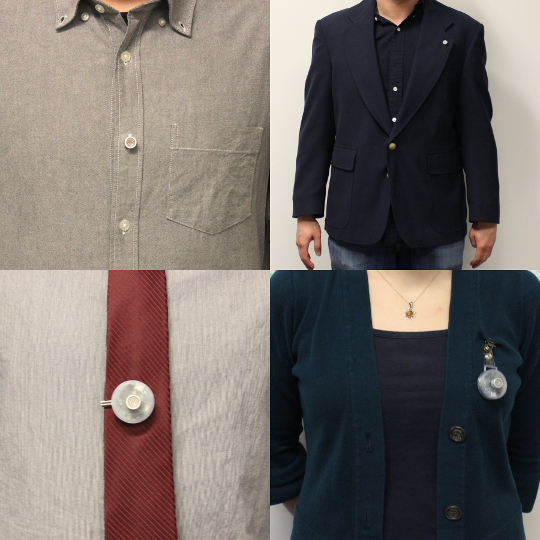
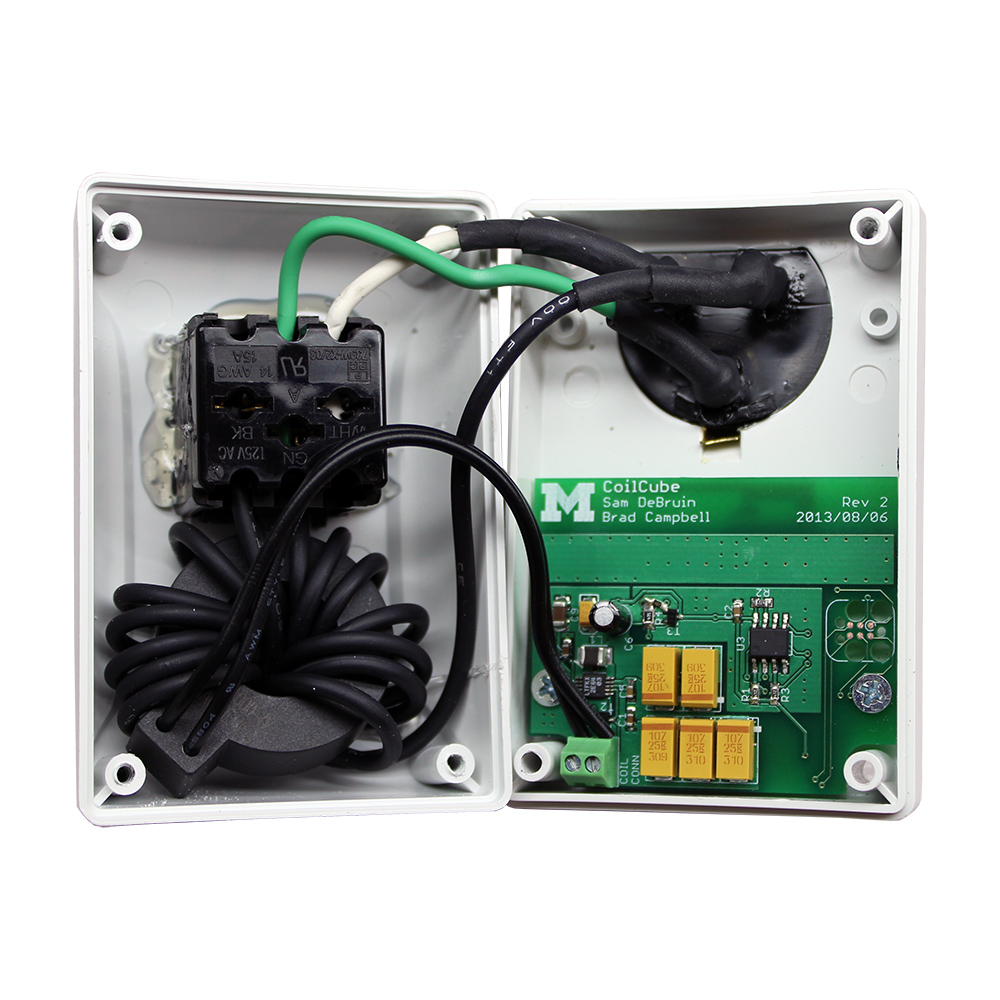
Monjolo. Energy-harvesting energy meters.
Conventional AC power meters perform at least two distinct functions: power conversion, to supply the meter itself, and energy metering, to measure the load consumption. This paper presents Monjolo, a new energy-metering architecture that combines these two functions to yield a new design point in the metering space.
The key insight underlying this work is that the output of a current transformer -- nominally used to measure a load current -- can be harvested and used to intermittently power a wireless sensor node. The hypothesis is that the node's activation frequency increases monotonically with the primary load's draw, making it possible to estimate load power from the interval between activations, assuming the node consumes a fixed energy quanta during each activation. This paper explores this thesis by designing, implementing, and evaluating the Monjolo metering architecture.
View project pageWearabouts. Localization through wearables.
Wearabouts is a system for indoor room-level localization of people. It detects individuals via Bluetooth Low-Energy communications from the devices they carry and determines their current location in a building. Wearabouts provides location information as a service to other systems, enabling new smart applications.
People and their devices are becoming intrinsically tied together. Smartphones already accompany their owner for the majority of the day. Wearable devices both continue and enhance this trend. The use of Bluetooth Low-Energy communications on these devices means that they all continuously broadcast their presence with advertisement packets. This allows them to serve a secondary purpose as a proxy for localizing people. We propose that non-intrusive room-level localization is possible by detecting devices that people already carry and wear.
View project page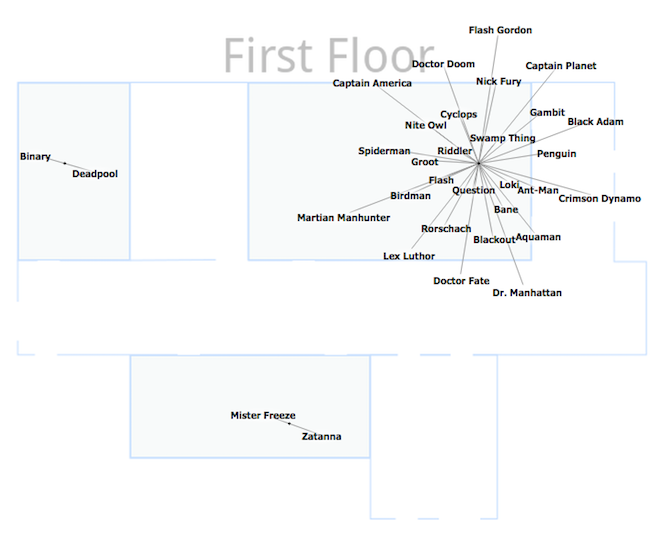

M3. Millimeter-scale computing.
Pushing the leading edge of technology, M3 seeks to build a modular, composible, general-purpose sensing and computation platform at millimeter-scale.
The goal of the Michigan Micro Mote (M3) project is to finally realize the Smart Dust vision: networks of integrated, autonomous, energy-harvesting nodes that can sense the environment and deliver their data over a wireless mesh network. The concrete goal of the project is to: (1) create sensor nodes that are cubic-mm in size, (2) draw ~10 nW, and (3) deliver data every few minutes over a multihop network. This requires advances in every layer of the system stack -- circuits to memory to processor to timers to radios to interconnects to packaging to software to protocols to programming models. If successful, this represents a 1,000-10,000 fold improvement over the state-of-the-art in size and power.
View project pageμSDR A low power, low cost, low area software-defined radio
"By about 2020 software radios will have become the standard technology for commercial, as well as military, radios, employed in a range of devices, from battery-powered sensors and hand-held devices to plugged-in devices (such as base stations)," claims BBN's Craig Partridge in the September 2011 issue of CACM. However, one of the chief impediments to realizing this future is that today's software radios are large, expensive, and power-hungry, and so they're poorly-suited to battery-power and hand-held devices. This project explores clean-slate system architectures for software-defined radios, ranging from highly-programmble radios to RF front-ends with reconfigurable hardware baseband processing to simple RF front-ends with pure software baseband processing. The key challenge is how to define, describe, and partition the computations that occur across electronics (e.g. filters), hardware (e.g. verilog), and software (e.g. C/C++) to maximize efficiency and resource utilization. Our chief aim is to make software radios small, inexpensive, and low-power. Today, we have an 802.15.4-compatible SDR platform that's just 3"x5" and costs around $100. It will soon be an open platform for other researchers, and it will allow us to explore the range of architectural tradeoffs necessary to economically and efficiently realize pervasive SDR systems.
View project page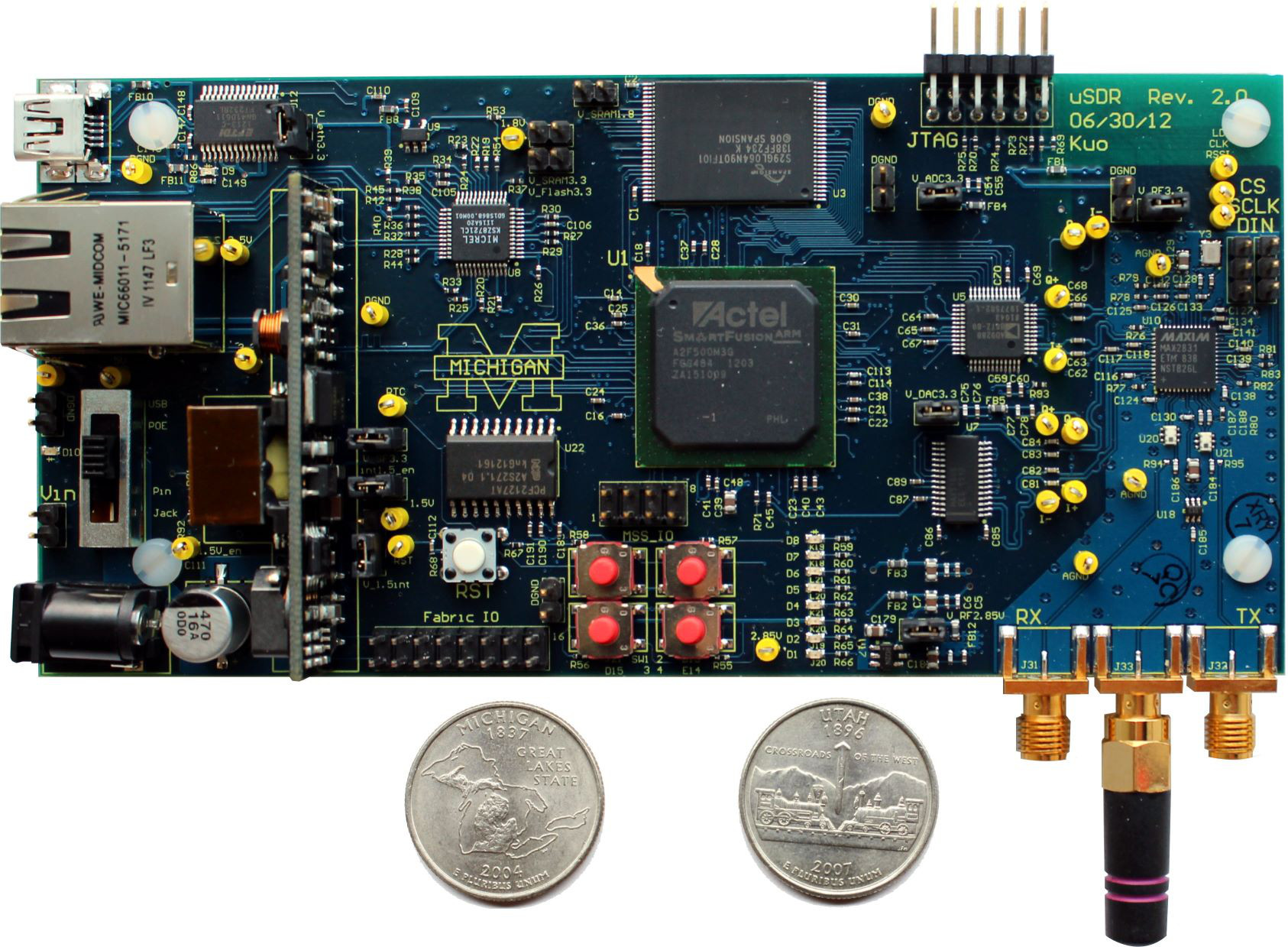
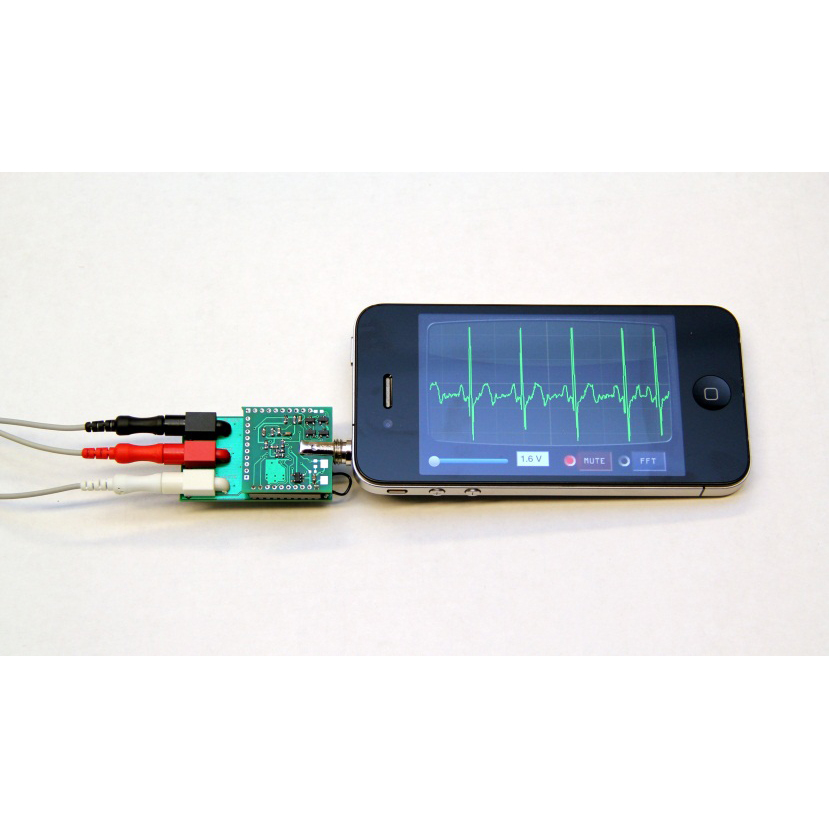
EKG Sensor. The mobile phone as a medical instrument.
We believe that any hospital, village clinic, or doctor can have access to advanced health care instruments like an EKG monitor for little more than the cost of a mobile phone.
Health care facilities in developed countries have access to a large number of medical instruments unavailable to health care professionals in the developing world. One example of such an instrument is the EKG monitor. EKG signals are used to diagnose a wide range of medical conditions but they are often unavailable in all but the most advanced hospitals in developing countries like India, Ghana etc. We aim to design a low-power, low-cost EKG monitor that uses the "HiJack" platform for interfacing between the EKG sensor peripheral and the mobile phone, and the mobile phone for visualizing the ECG waveform.
View project page
